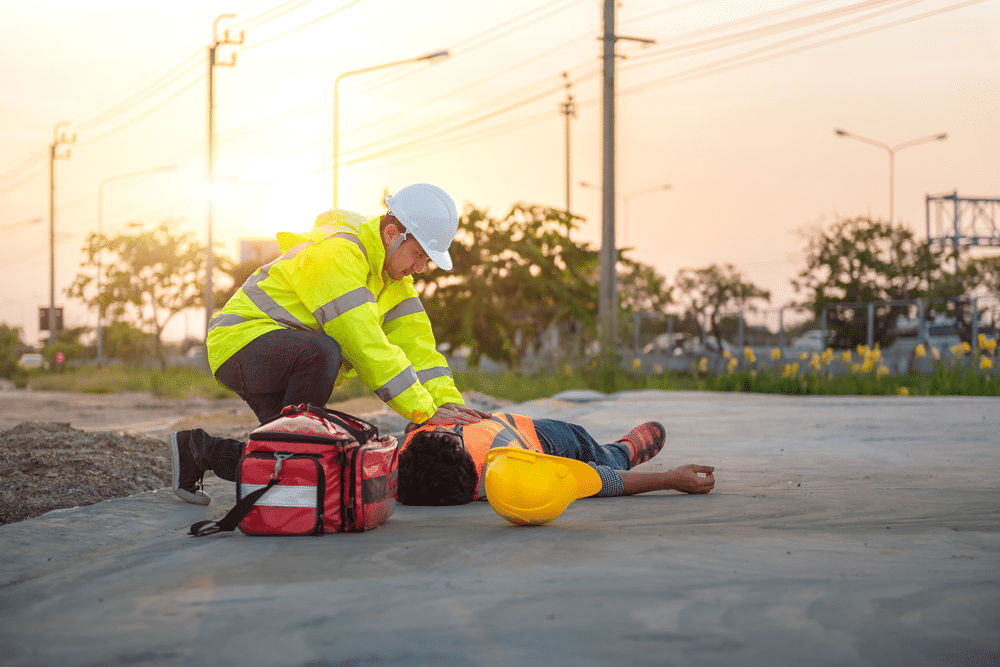NSW - Health and Safety Respresentative (HSR)

Security guards and crowd controllers working in NSW need a current CPR and first aid certificate to get their security operative licences. This blog unpacks 5 key skills that first aid training will add to your repertoire and your resume.
As a security guard you are trained to recognise and respond to suspicious behaviour and critical situations. Your first aid certificate will definitely hone these skills, increasing your situational awareness while teaching you how to identify the signs and symptoms of specific illness and injuries.
This could be anything from a person in the early stages of a stroke, to an intoxicated person who has passed out and their airway is obstructed with vomit.
Most bystanders at the scene of an emergency will automatically assume that a uniformed security guard will be in charge, and your first aid training will give you the skills and confidence to manage the scene until help arrives.
If you are working in or around licensed premises, you may have a large number of staff and bystanders to manage. Alternately, if you are on mobile patrol late at night in an industrial area, it may be just you and the casualty until help arrives.
Whatever the circumstances you’ll need to be able to:
Being a licensed security guard in NSW can put you in the path of a wide range of medical emergencies, and once you’ve done your first aid course you will be able to recognise (and assist) people who have had a heart attack, stroke, snake bite, allergic reaction, insect or animal bite, impact injury, electric shock, and more.
First aid training is hands-on, so you’ll also know how to use medical grade PPE (eg, masks and gloves), bandage limbs, use a defibrillator, and perform CPR on real people.
That said, sometimes you’ll be attending an emergency scene where there are other trained first aiders onsite. In these instances, it may be more practical for you to deploy the site’s first aid resources, leaving you free to co-ordinate emergency responders and keep bystanders at a safe distance.
Your CPR and first aid courses will teach you how to communicate with emergency responders including 000 operators, paramedics, and hospital staff as follows:
1. Calling NSW Ambulance
In many circumstances the 000 operator will despatch the ambulance while you are still providing details over the phone. You may also be given first aid instructions, so don’t hang up unless instructed by the operator.
2. Paramedics and medical personnel
When paramedics arrive, they’ll need to be escorted to the casualty and given information about what happened. You’ll also need to provide details of any first aid and CPR that has already been provided, as well as logistical information that could affect access and overall safety.
All incidents resulting in an injury or requiring first aid treatment must be recorded in an incident register. Depending on your employment arrangements you may have to complete an incident report for the client or venue, as well as your employer or agency.
Incident report forms are legal documents and need to be filled out accurately, with as much information as possible. As a minimum you’ll need full names of witnesses and casualties, dates, times, locations, injuries, and damage to property.
It’s also important to protect the confidentiality and privacy of bystanders and casualties, in-line with the policies of your client, employer, or agency.
Do you need a CPR or first aid certificate? Maybe you need some refresher training? Vigil Training College specialises in first aid training for security guards and crowd controllers working in NSW. Browse here online for our latest course brochures and upcoming training dates.